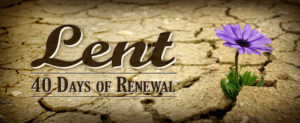
Pope Francis’ Message for Lent 2020
The Vatican releases Pope Francis’ Message for Lent 2020, in which the Holy Father invites the faithful to embrace the paschal mystery as the basis for conversion. In his Message for Lent 2020, Pope Francis points to the paschal mystery – the mystery of Jesus’ Passion, Death, and Resurrection – as the basis of conversion. The Message bears the title “We implore you on behalf of Christ: be reconciled to God”, a quote from St Paul’s Second Letter to the Corinthians.
Pope Francis says that during this season of Lent, he wants to invite the faithful to fix their eyes on the crucified Lord, and allow ourselves “to be saved over and over again”. “Jesus’ Pasch is not a past event; rather, through the power of the Holy Spirit it is ever present, enabling us to see and touch with faith the flesh of Christ in those who suffer”.
For the full script of the message see:

February 24th-8th March / Feabhra 24ú – Márta 8ú Fairtrade Fortnight
From 24th February to 8th March it is Fairtrade Fortnight. You can join in the annual campaign when we bring the fight for change to the masses. In 2020, we are continuing our call for cocoa farmers to earn a living income, as well as sharing stories that show the positive impact that only Fairtrade has on the women behind your chocolate bar.
Only Fairtrade is campaigning publicly for the right to a living income for farmers – men and women.
https://www.fairtrade.org.uk/get%20involved//Current-campaigns/Fairtrade-Fortnight
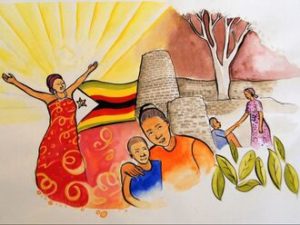
March 1st World Day of Prayer / Lá Domhanda Urnaí Rise! Take Your Mat and Walk (John 5:2-9a)
World Day of Prayer is a global ecumenical movement led by Christian women who welcome you to join in prayer and action for peace and justice. The WDP 2020 program is based on Jesus’ encounter with a person who, although positioned for healing, had not acted upon the opportunities given (John 5:2-9a). Jesus asked –“Do you want to be made well?” You are faced with this life-changing question. What are you going to do? Use this opportunity to reflect with your WDP group, community and ecumenical partners. Prayer and action are what links us together around the globe.
https://worlddayofprayer.net/index.html
March 8th St. John of God / Naomh Eoin le Dia
John was born in 1495 in Montemor O Novo, Portugal. He spent most of his life in Spain and worked as a shepherd, soldier and bookseller in many parts both of Spain and North Africa. He eventually settled in the city of Granada in the south of Spain. It was here that he met St. John of Avila whose preaching had a profound effect on him, and resulted in a dramatic conversion experience. This experience made him realise the depth of God’s love for him and how little he had done to love God in return.
Starting with a small porch where he brought those who were sick, poor or in any kind of need, John went on to set up shelters and eventually a hospital. Before he began his first hospital he went to work with the Jeremites, a religious order who also looked after the sick and there he received training in medicine and in nursing skills. He was very innovative in his treatment of the sick being one of the first to ensure that each sick person had a separate bed and going around washing and tending the patients himself. News of John’s work spread far and wide. He began to attract others who wanted to help him to look after those in need.
John died on the 8th March 1550 aged 55. He was canonised in1690. A few years after his death those who were his followers were recognised as a religious order and called the Hospitaller Brothers of St. John of God. Today the work which John began in a porch in Granada continues in 52 countries in the world and covers a wide range of care for those with physical and learning disabilities, the homeless and poor, those with mental health problems and the elderly.
Saint John of God, help us to act out of love as soon as we feel the promptings of the Holy Spirit. Help us learn to fight the little voices in our heads and hearts that give us all sorts of practical reasons to wait or delay in our service of God. Amen
https://www.catholic.org/saints/saint.php?saint_id=68
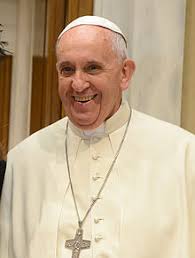 March 13th 7th Anniversary of Pope Francis to the Papacy
March 13th 7th Anniversary of Pope Francis to the Papacy
Pope Francis was born Jorge Mario Bergoglio and is the first pope from the Southern Hemisphere. He is the first Jesuit pope and the first non-European pope since Pope Gregory III in 741. He chose his papal name to honour St. Francis of Assisi. He was inaugurated on 19 March 2013, and his motto became “Miserando atque Eligendo” or “lowly but chosen.” The motto was taken from the Venerable Bede on Saint Matthew’s Gospel.
On the anniversary of Pope Francis’ election, mass is normally held at the Vatican and Catholic churches throughout the area. During the mass, people pray for the pope’s continued health and well-being while asking God to guide him in his decisions for the Catholic church.
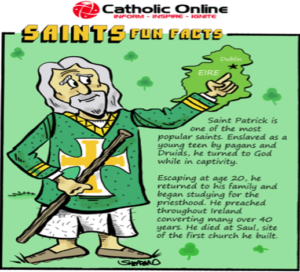 March 17th St. Patrick / Naomh Pádraig
March 17th St. Patrick / Naomh Pádraig
St Patrick is one of Christianity’s best-known figures. Born in Britain to a wealthy family near the end of the fourth century, at the age of sixteen, Patrick was taken prisoner by a group of Irish raiders. He was carried away to Ireland where he was held captive for more than six years. During his time as a slave, Patrick worked as a shepherd, attending the flocks of his master. Alone and homesick, Patrick prayed many times a day while in the pastures with the sheep.
St. Patrick used the shamrock, to illustrate the mystery of the Holy Trinity to the pre-Christian Irish. To this day, the shamrock is a well-known symbol of Ireland. He founded many churches in Ireland and continued looking after them until his death on March 17, 493. Every year, on March 17, millions of people celebrate this annual feast day that celebrates St. Patrick, a patron of Ireland.
‘I Am Patrick’ is a new full length docudrama on the life of St Patrick. It is available on Netflix. It stars John Rhys Davies from ‘Lord of the Rings’ as the older Patrick with wonderful contributions from our own Fr Billy Swan!
http://education.dublindiocese.ie/2012/02/21/saint-patrick/
March 19th St. Joseph / Naomh Íosaf
St. Joseph was the husband of the Blessed Virgin Mary and the foster father of Jesus. All we know about Joseph comes from the accounts of the nativity in the New Testament. He was a tradesman, commonly he is said to have been a carpenter, but it is possible he may have been a stone worker. He was said to have been a direct descendant of David, the great king of Israel. Since Joseph is not mentioned in any accounts of Jesus’ public life, his crucifixion, or resurrection, it is thought that Joseph died before Jesus started preaching. St. Joseph is the patron saint of the Catholic Church, unborn children, fathers, immigrants, workers, Vietnam and the Philippines. For a short informational video and resources, see: http://www.catholic.org/saints/saint.php?saint_id=4

March 21st International Day of the Elimination of Racial Discrimination Lá Idirnáisiúnta tiomnaithe do dhíothú Idirdhealú Ciníoch
March 21 is International Day of the Elimination of Racial Discrimination. This observance was established by the United Nations General Assembly to call on the international community to redouble its efforts to eliminate racial discrimination around the world.
Observation of this International Day is closely connected to the events of March 21, 1960, when police of Sharpeville, South Africa, opened fire and killed 69 people at a peaceful demonstration against the apartheid pass laws. Pass laws would significantly limit the movement of African populace and migrant labor.
UN General Assembly established International Day of the Elimination of Racial Discrimination in 1966 to commemorate the events in Sharpeville. Kofi Annan, the 7th Secretary-General of the UN, considered that much success in the fight against racial discrimination depends on ordinary citizens and their will to speak out against intolerance and discriminatory acts in their daily lives.
https://www.un.org/en/events/racialdiscriminationday/
March 22nd World Water Day / Lá Domhanda Uisce “Whoever you are, wherever you are, water is your human right”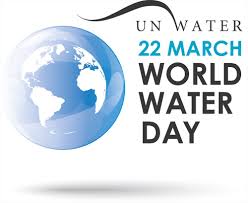
World Water Day 2020, is about water and climate change – and how the two are inextricably linked. Adapting to the water effects of climate change will protect health and save lives. Using water more efficiently will reduce greenhouse gases. We cannot afford to wait.Everyone has a role to play.
https://www.worldwaterday.org/
March 24th Oscar Romero
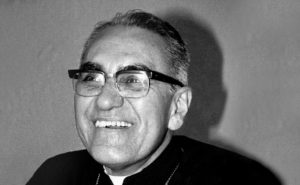 “We are workers, not master builders, ministers, not messiahs.
“We are workers, not master builders, ministers, not messiahs.
We are prophets of a future not our own.”
Born on August 15th 1917, Oscar Arnulfo Romero y Galdamez was sent to study for the priesthood in Rome and was ordained in April 1942. He embraced a simple lifestyle; he was a popular preacher who responded with real compassion to the plight of the poor. He gave dedicated pastoral service to the diocese of San Miguel for 25 years. He was ordained Archbishop of San Salvador in 1977. Over the years, the social and political conflict in El Salvador intensified, and from his Cathedral pulpit, Archbishop Romero became the voice of the voiceless poor. There, in a society of cover-up and lies, he spoke the truth of what was happening in the countryside; he denounced the killings, the torture and the disappearances of community leaders; he demanded justice and recompense for the atrocities committed by the army and police and he set up legal aid projects and pastoral programmes to support the victims of the violence. He was assassinated on Monday March 24th 1980 as he was celebrating Mass in the chapel of the Divine Providence cancer hospital where he lived. Thirty-five years later, he was declared a martyr of the Church, killed out of hatred of the faith, and was beatified on May 23rd 2015.
A study of Oscar Romero can be used in a variety of ways for the Junior Cert Religion Syllabus. See http://education.dublindiocese.ie/oscar-romero/ for ideas and further resources.
Each year in preparation for the Feast of Blessed Oscar Romero on the anniversary of his martyrdom (24th March) you can download Liturgical Resources that may be of assistance in the planning of your own Liturgies, be it in church, school or in your own home. http://www.romerotrust.org.uk/who-was-archbishop-oscar-romero
![]() Trócaire Romero Award
Trócaire Romero Award
The Romero Programme highlights the efforts of people in Ireland and across the world to raise awareness of human rights violations and support people who are experiencing hardship. Students can take part in Trócaire Awards Programmes, based on global justice issues. The Trócaire Romero Award is a student led awareness raising project that can be incorporated into a TY module, a CSPE project, or a RE topic. Prizes for most impressive entries and schools can find more details online
https://www.trocaire.org/getinvolved/trocaire-romero-award
March 22nd Mother’s Day/Laetare Sunday Lá na Máithreacha/ Domhnach an áthais
As Christianity spread throughout Europe, Mother’s Day celebrations were held on the fourth Sunday of Lent – Laetare Sunday or ‘mid-Lent’ Sunday – the celebrations were adapted to honour the Virgin Mary and the ‘Mother Church’. Customs began to dictate that a person visit the church of his/her baptism on this day. People also attended the mother church of their parish, laden with offerings.
https://www.catholicculture.org/culture/liturgicalyear/calendar/day.cfm?date=2020-03-22
March 25th Feast of the Annunciation / Teachtaireacht an Aingil
“I am the handmaiden of the Lord; let it be to me according to your Word.”
A tradition, which has come down from the apostolic ages, tells us that the great mystery of the Incarnation was achieved on the twenty-fifth day of March. It was at the hour of midnight, when the most holy Virgin was alone and absorbed in prayer, that the Archangel Gabriel appeared before her, and asked her, in the name of the blessed Trinity, to consent to become the Mother of God. The feast of the Annunciation of the Lord celebrates Angel Gabriel’s appearance to the Virgin Mary (Luke 1:26-38) and his announcement that she had been chosen to be the mother of the saviour of the world. Also being celebrated during this feast was Mary’s fiat, which means “let it be” in Latin—her willing acceptance of the news.
Mary, in her selflessness, was open to the angel´s visit. She recognized who was speaking. She listened, received and responded. In so doing, she shows us the way to respond to the Lord’s call in our own lives. God initiates a relationship and we respond in surrender to Him. This dynamic, this heavenly road, leads to a dialogue, a conversation, a way of life. By saying Yes, through our own Fiat, we are set apart. Consecrated. Made holy. Mary shows us that way.
The Annunciation, which means “the announcement,” is observed almost universally throughout Christianity, especially within Orthodoxy, Anglicanism, Catholicism, and Lutheranism.
For further teaching resources see:
https://www.catholicculture.org/culture/liturgicalyear/calendar/day.cfm?date=2017-03-25
https://www.catholic.org/lent/story.php?id=40820
 Religion Teachers’ Association of Ireland National Conference 2020
Religion Teachers’ Association of Ireland National Conference 2020
Saturday 7th March 2020 Hodson Bay Hotel, Athlone, Co. Roscommon
All teachers and students of Religious Education are invited to attend. Places must be reserved in advance by emailing valroe@hotmail.com providing your name, the name of your school and your TC number.
Other Lenten resources
(Thanks to Loreto Education Trust: https://loretoeducationtrust.ie/ )
Isaiah 58:6-7
Is not this the kind of fasting I have chosen: to loose the chains of injustice and untie the cords of the yoke, to set the oppressed free and break every yoke? Is it not to share your food with the hungry and to provide the poor wanderer with shelter…
Lent in Three Minutes
https://bustedhalo.com/video/watch-lent-3-minutes
https://www.youtube.com/watch?v=zAuB-
https://www.youtube.com/watch?v=nwoLUPHGsX4
MUSIC FOR LENT
Bless the Lord, my soul (Taizé) https://www.youtube.com/watch?v=t4Svh-9ohg4
On Eagles’ Wings (Michael Joncas) https://www.youtube.com/watch?v=MvpjxfWrjzY
Your Faith in Me (Ian Callanan) https://www.youtube.com/watch?v=nwoLUPHGsX4
Psalm 91 “Be With Me, Lord” (Marty Haugen) https://www.youtube.com/watch?v=mKzmYk6x4kE
The Clouds’ Veil (Liam Lawton) https://www.youtube.com/watch?v=yULkmEwEGYQ
Living Lent Daily
“This Lent, foster a daily practice of spiritual calm where God is at the centre. Living Lent Daily is a daily e-mail series delivering fresh reflections based on the Scriptures of Lent. Each day’s message includes a quotation from the day’s Scripture readings and a brief reflection for meditation and prayer.The messages also include suggestions for further exploration of Lenten themes through additional online articles and prayers.”
http://www.loyolapress.com/our-catholic-faith/liturgical-year/lent/living-lent-daily
https://www.catholicbishops.ie/2020/02/24/living-lent-2020
Searmanas In Onóir Phádraig Naofa
Coinneal, Siombail Athmhuintearais, Cros Cheilteach
Síormholadh is Glóir Duit
Síormholadh is glóir duit, a Athair shíoraí,
A gheall dúinn an tsíocháin leat féin i do ríocht,
Is d’Aon-Mhac nuair d’fhuascail Síol Éabh’ lena bhás,
Gur réitigh an ród dúinn chun aontacht is páirt.
Ón gcroí gabhaimid buíochas
As ucht do dhea-scéal dúinn
Is Pádraig do chraol é fá ghríosadh do ghrá.
An ghlóir atá ’ndán dúinn id’ bhriathar is léir
“T’réis m’ardú ón talamh tarraingeoidh mé gach n-aon.”
Go raibh muid, a Dhia dhil, ’nár scáthán go deo
Díot féin le grá is páirt, ar nós Phádraig fadó.
Aon anró níor bhrí leis
Ach Briathar Dé ’chraoladh
Is miorúilt ghrá Dé do-ghní chuile ní nua.
Tadhg Ó Sé, Veritas Hymnal, eagrán 1974, uimhir 134
Déantar Lá Fhéile Pádraig a cheiliúradh ar fud an domhain le mórshiúil agus taispeántais agus ainmnítear daoine agus áiteanna ina onóir. Insítear scéalta agus cantar amhráin faoi Phádraig, ach is annamh a thugann siad léargas dúinn ar an DUINE féin.
Is sa dá dhoiciméad a scríobh sé féin, an “Confessio” agus an “Litir Chuig Coroticus” a fhaighimid léargas ar Phádraig mar fhear:
- Le creideamh láidir
- A thug maithiúnas dá naimhde
- A rinne nascadh idir chultúir.
Fear Creidimh
In aois sé bliana déag bhí Pádraig ina sclábhaí ag aoireacht caorach ar thaobh sléibhe i bhfad óna chairde agus óna mhuintir. Bhí sé uaigneach, fuar, ocrach. Cad a dhéanfá dá mbeifeá sa riocht sin? Cad a rinne Pádraig?
Deir sé féin gur chuir sé a mhuinín i nDia agus gur tháinig Dia i gcabhair air.
Fuair sé misneach agus sólás agus bealach éalaithe sa deireadh.
Guímis ar son ógra an lae inniu atá uaigneach, buartha, éadóchasach.
A Dhia, cuir i gcuimhne dóibh go dtabharfaidh tusa misneach, dóchas agus neart dóibh má ghuíonn siad chugat, dála mar a rinne Pádraig agus é ina dhéagóir. A Thiarna, éist linn.
A Thiarna, bí ceansa agus éist linn.
Lastar coinneal.
“Dóchas linn Naomh Pádraig, aspal mór na hÉireann,
Ainm oirdhearc gléigeal, solas mór an tsaoil é.”
Duine Maiteach
Fuair Pádraig droch-íde in Éirinn agus bhí áthas air nuair a d’éirigh leis éaló. Bhí an-áthas ar a mhuintir nuair a d’fhill sé abhaile agus d’impigh siad air gan imeacht uathu arís. Ach i mbrionglóid san oíche chuala sé muintir na hÉireann ag impí air filleadh ar ais, rud a rinne sé.
“D’fhill le soiscéal grá dúinn
Ainneoin blianta i ngéibheann.”
Dála mar a rinne Íosa, bhí Pádraig ábalta maithiúnas a thabhairt dá naimhde agus a shaol a chaitheamh ag freastal orthu. Chothaigh sé athmhuintearas agus síocháin.
A Dhia, cabhraigh linne agus le muintir an domhain uile maithiúnas a chleachtadh agus comhoibriú le chéile ar son na síochána. A Thiarna, éist linn.
A Thiarna, bí ceansa agus éist linn.
Taispeántar siombail athmhuintearais.
Nascadh idir Chultúir
Bhí Pádraig eolach ar an reiligiún Ceilteach a cleachtadh in Éirinn. Bhí meas aige ar na dea-thréithe a bain leis an reiligiún sin agus rinne sé nascadh idir nósanna a bhí acu agus an Chríostaíocht, m.sh. idir Tine na Bealtaine agus Tine na Cásca. Chuir Pádraig siombail na Croise, siombail na Críostaíochta leis an gciorcal, siombail na gréine, agus sin an bunús atá leis an gCros Cheilteach.
Taispeántar ciorcal agus cros anuas air.
A Dhia, cabhraigh linn a bheith neamhchlaonta i leith daoine agus cultúr atá neamhchosúil lenár gcultúr féin. Taispeáin dúinn na tréithe agus na nósanna maithe a bhaineann leo, ionas go mbeimis ábalta maireachtáil le chéile go síochánta.
A Thiarna, éist linn. A Thiarna, bí ceansa agus éist linn.
Dóchas Linn Naomh Pádraig
Dóchas linn Naomh Pádraig, aspal mór na hÉireann,
Ainm oirdhearc gléigeal, solas mór an tsaoil é.
D’fhill le soiscéal grá dúinn ainneoin blianta i ngéibheann.
Grá mór Mhac na páirte d’fhuascail cách ón daorbhroid.
Sléibhte, gleannta, maighe is bailte mór’ na hÉireann:
Ghlan sé iad go deo dúinn, míle glóir dár naomh dil.
Iarraimid ort, a Phádraig, guí orainne Gaela,
Dia linn lá ’gus oíche is Pádraig aspal Éireann
Traidisiúnta, Veritas Hymnal, 135
Rian Phádraig
Pádraig Aspal, Alleluia
Canaimís le dóchas croí,
Éist go fóill le glór do mhuintir,
Is bí in éineacht linn de shíor.
Tá rian na Naomh ar thír na hÉireann,
Rian geal Phádraig, soiscéal Dé.
Buíoch sinne, muintir Phádraig,
Leanaimis i gcónaí é.
Rian na gcos ar chruach is díseart,
Cill is clog i ndiaidh a shiúil;
Rian an té bhí creagach dílis,
Seirbhíseach Rí na nDúl.
Rian na mbriathar ’tá i scríbhinn
Ó Cheannannas Mór go hOileán Í,
Briathar Dé do riar a shaothar:
Déanam beart dá réir arís.
Rian an ghrá go buan san Eaglais,
Ainneoin peacaí, pian is crá;
Briathar misnigh dúinn ó Phrádraig:
“Déanfaidh sibhse fós níos fearr.”
Focail: Oliver Crilly, Ceol: Pat Ahern
In Caelo 104 tiomsaithe ag Liam Lawton
Síormholadh is Glóir Duit
Síormholadh is glóir duit, a Athair shíoraí,
A gheall dúinn an tsíocháin leat féin i do ríocht,
Is d’Aon-Mhac nuair d’fhuascail Síol Éabh’ lena bhás,
Gur réitigh an ród dúinn chun aontacht is páirt.
Ón gcroí gabhaimid buíochas
As ucht do dhea-scéal dúinn
Is Pádraig do chraol é fá ghríosadh do ghrá.
An ghlóir atá ’ndán dúinn id’ bhriathar is léir
“T’réis m’ardú ón talamh tarraingeoidh mé gach n-aon.”
Go raibh muid, a Dhia dhil, ’nár scáthán go deo
Díot féin le grá is páirt, ar nós Phádraig fadó.
Aon anró níor bhrí leis
Ach Briathar Dé ’chraoladh
Is miorúilt ghrá Dé do-ghní chuile ní nua.
Tadhg Ó Sé, Veritas Hymnal, eagrán 1974, uimhir 13
(Thanks to the Archdiocese of Dublin for use of their resources and monthly blog)
